Kerala parippu is a popular yellow moong dal curry that’s a staple in South Indian homes. This protein-rich lentil dish combines turmeric, curry leaves, and coconut for its distinctive flavor. Parippu curry is typically served with rice and is the South Indian version of comfort food.

This post contains affiliate links. As an Amazon Associate, I earn from qualifying purchases. Please read the disclosure.
What is Kerala Parippu?
Kerala parippu curry (pronounced pah-ri-puh) is a traditional South Indian lentil dish that rarely appears on Indian restaurant menus in the West. It’s a staple in the South Indian state of Kerala and an especially important part of the typical banana leaf meal called Kerala sadya (see image below).

The combination of yellow moong dal (cherupayar), coconut, and aromatic curry leaves creates a nutritious and comforting homemade dal recipe that’s simple yet flavorful. And it happens to be vegan.
This authentic Kerala-style dal recipe is one of my absolute favorite dishes. It’s familiar and deeply satisfying with every spoonful, like mac and cheese might be for someone else.
While you may need to visit an Indian grocery store for ingredients like curry leaves and split yellow mung dal, the effort delivers authentic Kerala cuisine.
Simple Ingredients, Authentic Flavor
The recipe is a refreshing departure from heavily spiced North Indian dishes commonly found at restaurants.
While many North Indian specialties rely on complex spice blends and cream-based sauces, Kerala style parippu curry stands out for its simplicity. It uses just turmeric and salt, allowing the natural flavors of the lentils and coconut to shine through.
This versatile South Indian dal tastes best over rice with a dab of ghee on top. Crumbling a freshly cooked Kerala pappadum on top takes this traditional Kerala lentil curry to the next level!
➡ If you’re looking for more Kerala recipes, try my Kerala vegetable stew, chicken curry, egg curry, or sambar.
Ingredients and Tips
🧂 Ingredients for Authentic South Indian Dal
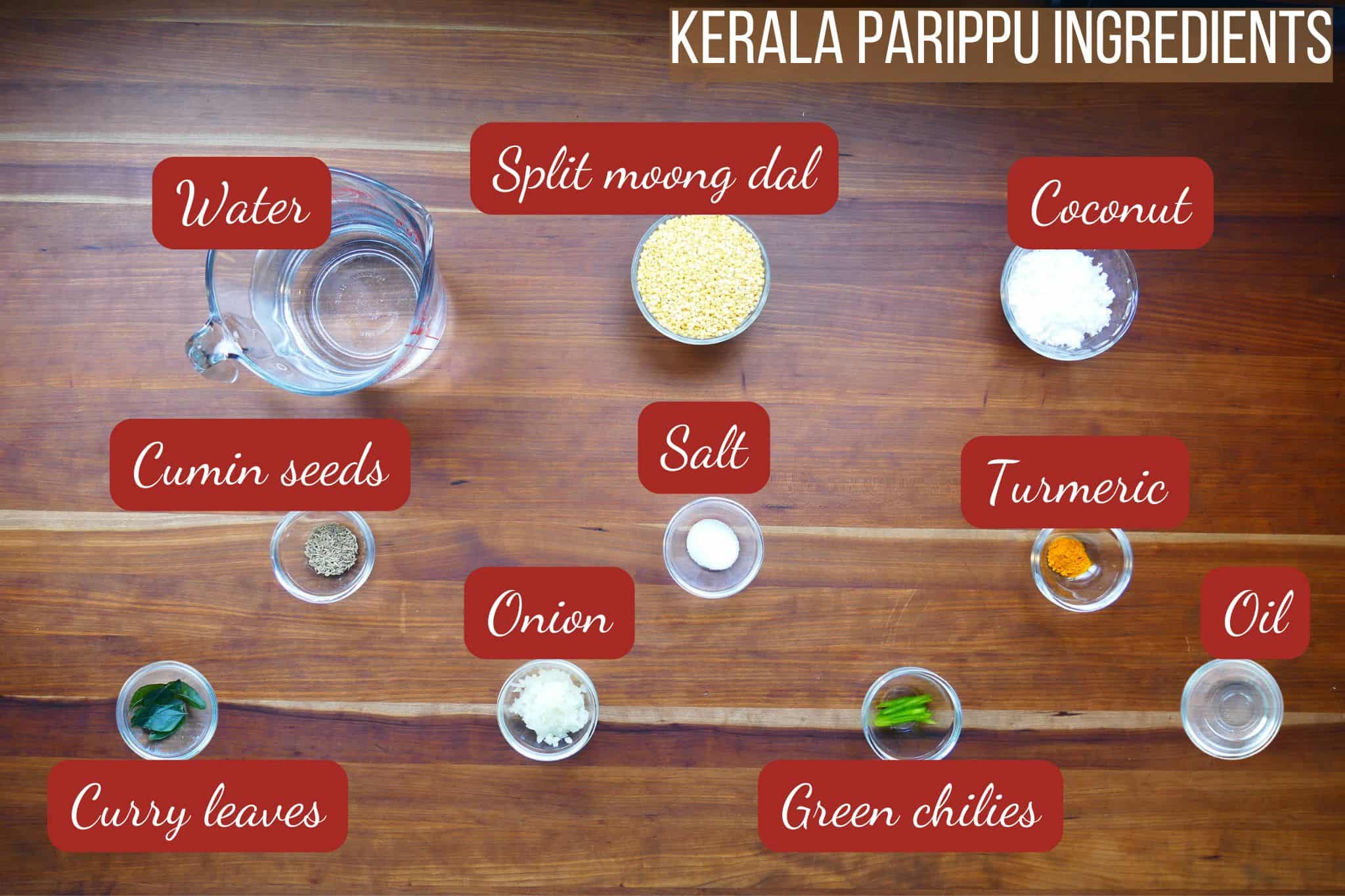
💡 Ingredient and Recipe Tips
🌿 Curry Leaves: Use fresh curry leaves if possible – the dried ones will have significantly less aroma and flavor in your Kerala-style dal. I highly recommend visiting an Indian grocery store!
🫘 Lentils: Authentic Kerala recipes use split yellow moong dal. While other yellow lentils like toor dal or masoor dal can be used in a pinch, they will add a slightly different texture and cooking time to your homemade parippu curry. The lentils should be washed until the water runs clear to remove excess starch and impurities.
🥥 Coconut: The quality of coconut matters for this coconut dal recipe – freshly grated coconut is ideal, but frozen grated coconut is a good alternative. I don’t generally use dried coconut (desiccated), but if that’s what you have, soak it in warm water for 10-15 minutes, and before using it, gently squeeze out any excess liquid.
When grinding the coconut with the cumin, add just enough water to get the blender going, not too much. I like to add a tablespoon at a time, stir, and add more water as needed until the mixture is a smooth paste.
🌶️ Chilis: Fresh green chilis work better than red chili powder to add heat to your South Indian lentil curry. I use 1 to 2 chilis, but you can adjust the quantity.
🥄 Tempering: The final step with curry leaves should be done right before serving, for maximum flavor and aroma. The addition of onions is optional. My mom does not use onions, but I do.
🍶 Oil: For tempering, use coconut oil for a subtle coconut flavor that perfectly complements this vegetarian Kerala recipe. You can substitute it with ghee or vegetable oil.
🕖 Preparation: For best results, prepare this traditional Kerala dal fresh rather than making it ahead, as the flavors and textures of this South Indian comfort food are at their peak when freshly made.
FAQS
Curry leaves provide the authentic flavor of traditional Kerala parippu. If you leave them out, the distinctive taste of this recipe will be different, so it’s worth seeking curry leaves from an Indian grocery store if possible.
No, authentic Kerala parippu is not spicy. It relies primarily on turmeric and salt for flavor, with curry leaves and coconut providing aromatic elements. Green chilies add some heat in your dal, with the traditional recipe having a medium spice level.
Leftovers can be refrigerated in an airtight container for 2 to 3 days. This dish can quickly spoil if kept for longer. The dal may thicken when chilled, so add a little water when reheating.
How to Make Parippu Curry
⏲️ Instant Pot Instructions
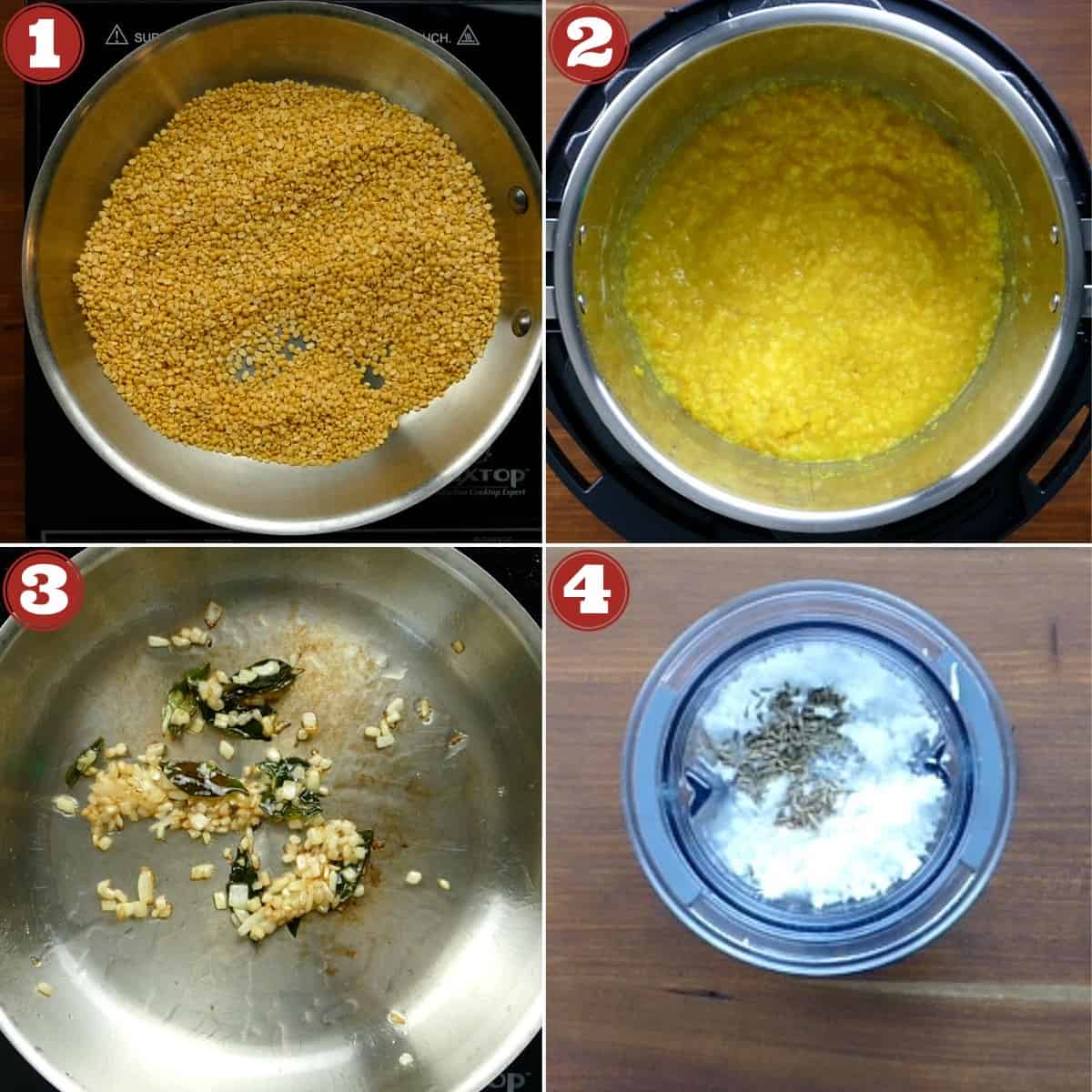
- Saute split moong dal in a frying pan.
- Pressure cook or boil the lentils.
- Saute curry leaves and onions (if using).
- Blend grated coconut and cumin.
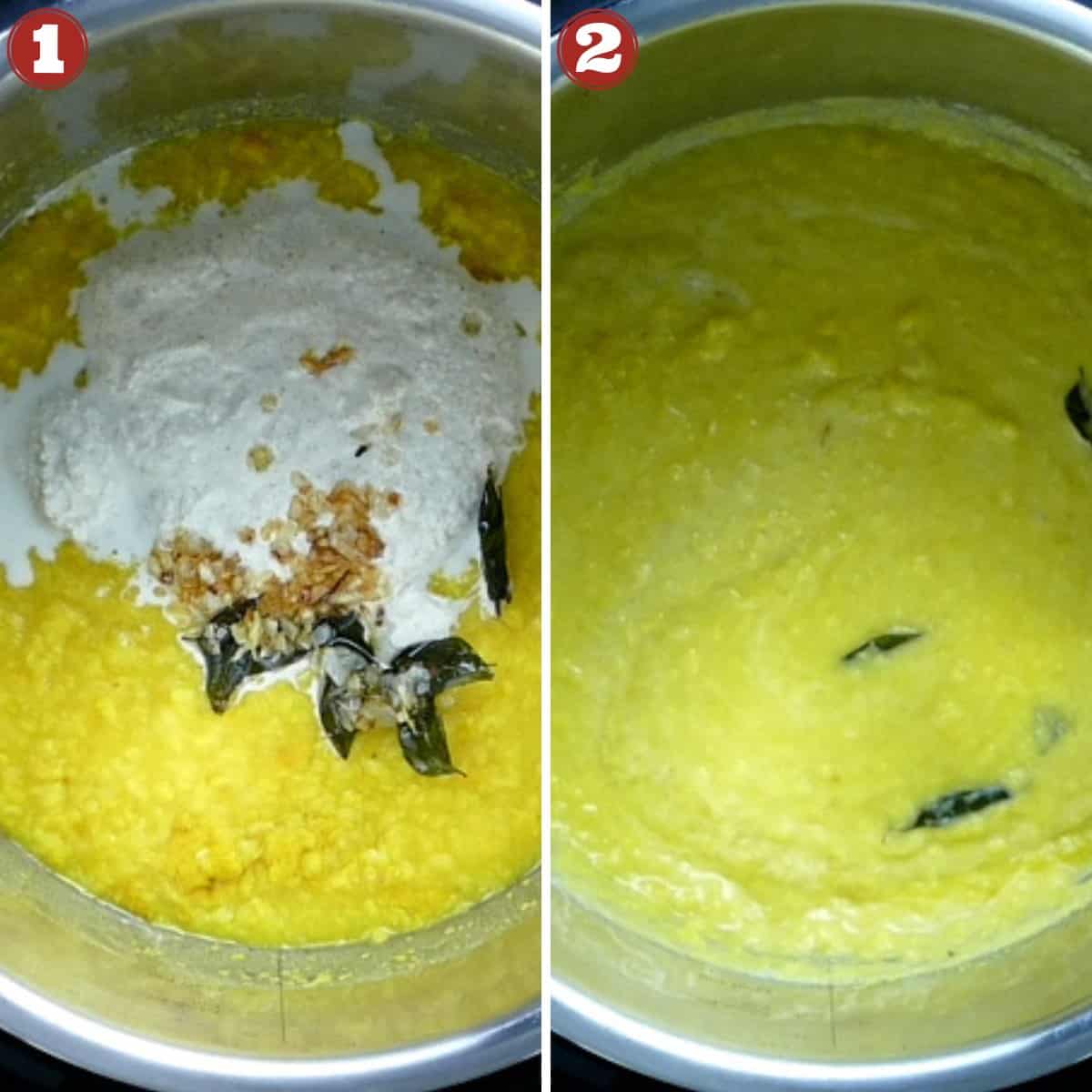
- Add the blended coconut and onions with curry leaves to the curry.
- Stir till combined and serve over rice, and top with a dollop of ghee. Serve with pappadum to crumble over the rice.
♨️ Stovetop Instructions
- Follow the exact instructions, except cook the dal in a pot on the stovetop.
See the recipe card below for detailed instructions.
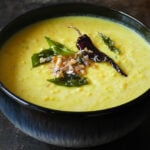
Kerala Parippu Curry (South Indian Dal with Coconut)
Ingredients
- 1 cup split moong dal (cheruparippu)
- 3 cups water
- 1 teaspoon salt
- ¼ teaspoon turmeric powder
- ½ cup grated coconut fresh or frozen [See Note 1]
- ¼ teaspoon cumin seeds
- 1 to 2 green chilli slit lengthwise – serrano, jalapeno, or Thai – to taste [See Note 2]
- 2 to 4 tablespoon water
- 1 tablespoon coconut oil [See Note 3]
- 12 curry leaves fresh
- 2 tablespoon shallots or red onions, finely chopped [See Note 4]
Instructions
- Roast 1 cup split moong dal in a dry skillet without any oil over medium heat. Stir frequently until fragrant, about 2 to 3 minutes. Don't let it brown. Allow to cool a bit and rinse well. Add 3 cups water, 1 teaspoon salt, and ¼ teaspoon turmeric powder to a pressure cooker or large pot. Stir in the lentils.
- Instant Pot: Pressure cook the yellow split peas for 4 minutes and do a natural release of pressure. Stovetop Pressure Cooker: pressure cook the dal for 2 whistles and let the pressure release on its own.Stovetop in a Pot: Bring the contents of the pot to a boil, reduce the heat, cover and cook for 25 to 30 minutes or until the dal is soft but not falling apart.The dal should be thick, not too runny. If it's too thick, add ¼ cup of boiling water.
- While the dal is cooking, blend the ½ cup grated coconut, ¼ teaspoon cumin seeds, and 1 to 2 green chilli until smooth. You'll probably need to add 2 to 4 tablespoon water to get the coconut to grind properly. Add just enough water to get the mixture moving and grind to a smooth paste. Don't add too much water. I prefer a smooth consistency. Some people like it to be slightly grainly. Set aside.
- Heat a small frying pan over medium high heat. Once the pan is hot, heat 1 tablespoon coconut oil. Add the 12 curry leaves and stir briefly. Add the 2 tablespoon shallots and saute until golden brown. Set aside.
- Add the coconut mixture to the dal, stir and heat through. Stir in the onion mixture. Serve over hot rice, topped with a teaspoon of ghee and a fried pappadum on the side.
Notes
Nutrition
Thank you for visiting Paint the Kitchen Red. All photos and content are copyright protected. Please don’t use any content without prior written permission. If you’ve made this recipe and would like to share it with your friends, please link back to this recipe. Thank you!
I am not a certified nutritionist. I provide my best estimate of nutritional information merely as a courtesy to my readers. If you depend on nutritional information for dietary or health reasons, I suggest using your favorite online nutrition calculator to confirm the nutritional value of this recipe based on the actual ingredients that you use.
Did you know that the best way to support your favorite bloggers is to comment and rate recipes, and share on social media? If you loved this recipe, please comment and give it a five ⭐ rating in the comment section below. If you’re a pinner, pin this post using the Pin buttons at the top and bottom of this post and in the recipe card above. Thank you for your support!

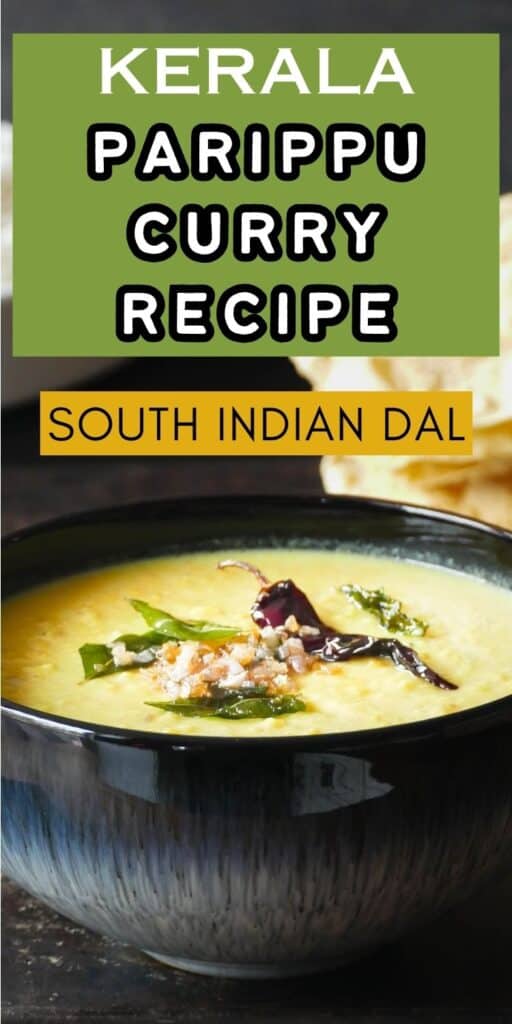

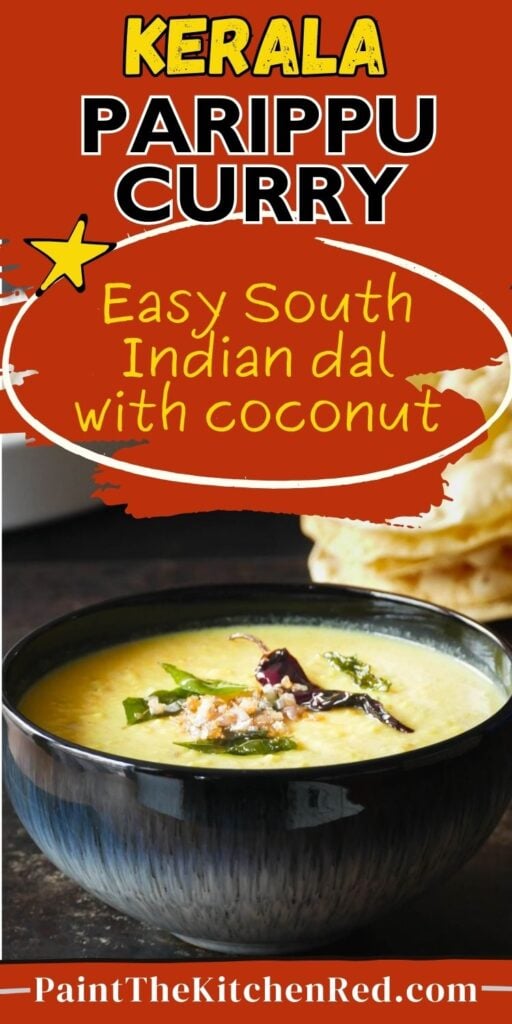
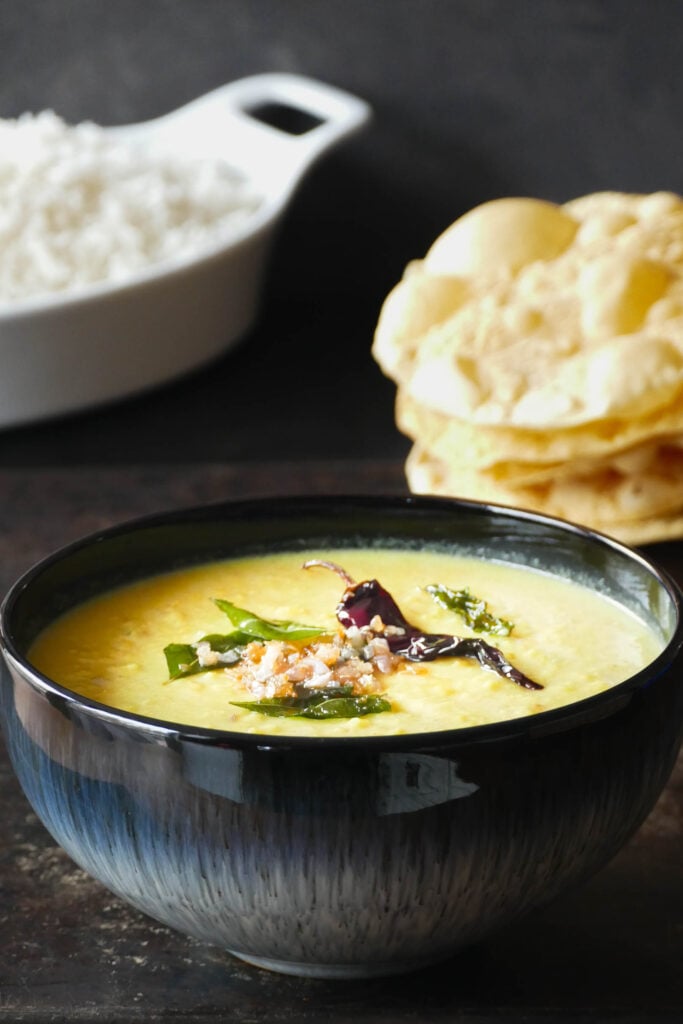
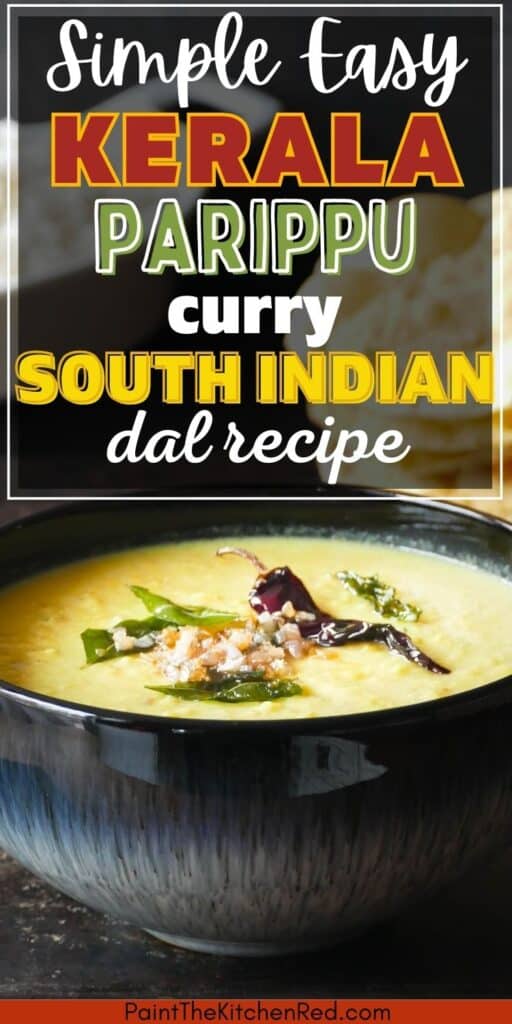




Bindu says
Hi Neena, I finally tried your recipe for dal. I soaked the mung dal, which I realize now I should not have done hahaha! Other than it being very mushy, the taste was so good. I did not add the chilli and so my daughter also enjoyed a lot. Thanks!
Neena Panicker says
Hi Bindu, I’m so glad you tried it and liked it. Hopefully, next time it’ll be perfect!